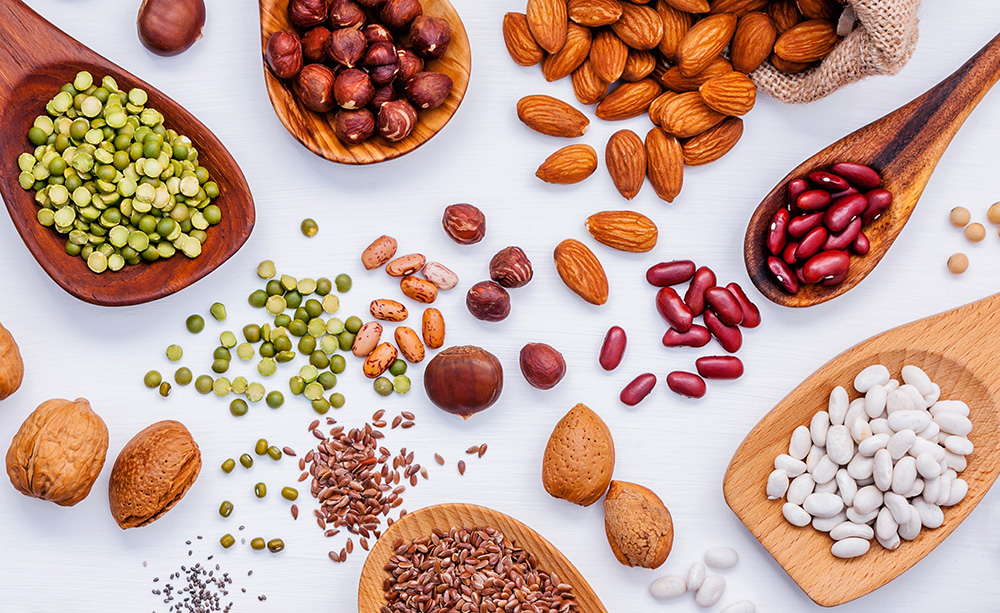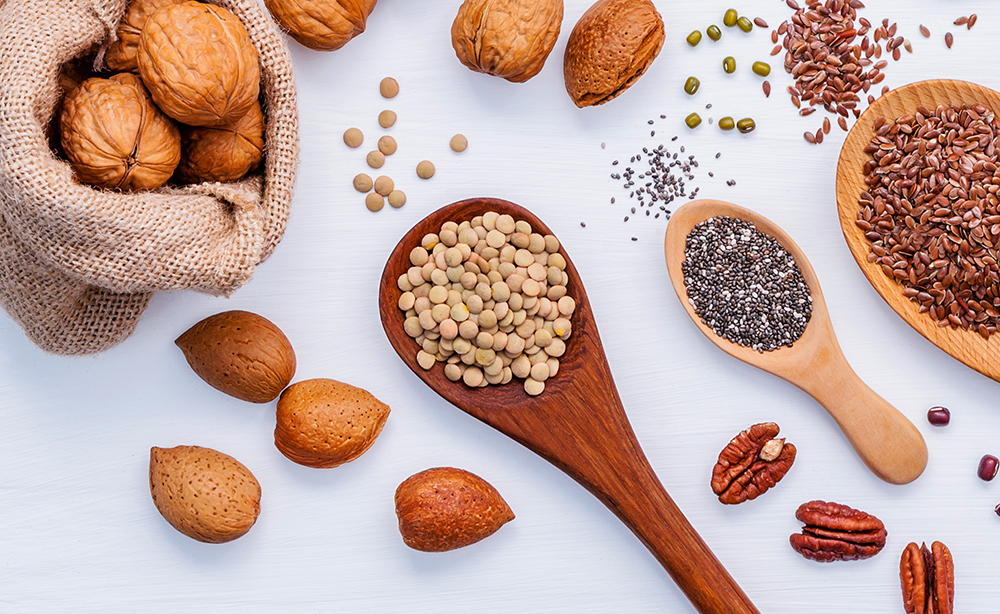Whether you’re already following a vegan diet or thinking about making the switch, chances are you’ve got one nutritional value on your mind: protein. Many people can’t imagine getting their recommended dose without incorporating animal products. But it really couldn’t be easier to get your protein from plant-based sources. From legumes and grains to some of our favourite veggies, protein is hiding everywhere…if you know where to look. For convenient, protein-packed options, our vegan catering in Toronto provides plant-based meals crafted to meet your nutritional needs.
What is protein?
Plant-based, animal-based and everything in between, protein is protein. The main difference is that vegans and vegetarians have to keep an eye on the “building blocks” of protein, called amino acids. Most animal products contain all of the amino acids we need, but many vegetarian proteins do not. So, to get everything you need, sometimes you just have to double up on your sources. Options like our vegetarian catering in Ottawa are great for offering diverse combinations that ensure all amino acid needs are met.
A good rule of thumb? A bean or legume plus a whole grain will almost always give you all of the amino acids you need. And you don’t even need to eat them at the same meal! Oatmeal for breakfast, black beans with lunch? You’re all set.
So, how much do you need? The average person should be eating about 1 gram of protein per kg of body weight per day. Read on to see just how easy that can be when following a plant-based diet.
Soy oh Boy!
We’ll start with a no-brainer: soy…and all its wonderful variations, from tofu and tempeh to edamame. Soy products are a complete protein, containing all of the essential amino acids. Score!
Tofu is the most familiar of the bunch, with 10-19 g of protein per 100 g serving – plus iron and calcium. Tempeh, a deliciously nutty cake made from fermented soybeans, has 12 g of protein per cup – plus it’s easy to digest and packed with probiotics . And crisped up in a little olive oil with salt and pepper, it couldn’t be tastier.
Want to go straight to the source? Give edamame – immature soybeans – a try. They don’t need anything but a quick steam-cook and some flaky sea salt. And not only are they sweet and grassy in taste, these little beans are high in protein, folate, vitamin K and fibre.
Hail Seitan
It’s not much to look at, but seitan is one of the most versatile plant-based proteins around. Made from wheat gluten, it contains a whopping 25 g of protein per 100 g serving – plus a good dose of selenium, iron, calcium and phosphorus.
Not sure how to use it? Trust us – it couldn’t be easier. Satisfyingly chewy and savoury, seitan is fantastic in stir-fries, tacos, sandwiches or (of course) salads. Just toss with a little oil and give it a good fry or roast, then add whatever seasonings your heart desires.
Lovable Legumes
Cheap, tasty, easy to cook…what’s not to love about legumes? Packed with protein and fibre, they’re so easy to slip into soups, salads, chili and more. Just one cup of cooked lentils will give you 18 g of protein and 50% of your daily recommended fiber. Plus, they’re high in antioxidants, folate, manganese and iron, and shown to promote healthy gut bacteria.

Not feeling lentils? Try the humble chickpea on for size. With 15 g of protein per cup, and a good serving of complex carbs, fibre, iron (and the list goes on…), these tasty legumes are a favourite add-in for soups and stews, or they make an amazing snack roasted up with some salt and smoked paprika.
Bean there, done that? Black beans are one of the healthiest beans around. Great in soups, chilis and Mexican dishes, these dark, antioxidant-rich legumes have 15 g of protein per cup – and less starch than most other beans.
Make it Grain
Another easy way to increase your protein intake? Try to eat more whole grains. Whether you’re craving an ancient grain like spelt or teff (10 g of protein per cup), an easy side like wild rice (7 g of protein per cup) or a warming bowl of oatmeal (12 g of protein per cup), grains are one of the easiest, and most delicious, ways to eat more protein. Plus, some grains like quinoa contain all of the essential amino acids – so they’re basically a one-stop shop.
Go Nuts for Seeds
Another instant pantry upgrade? Go all in on nuts and seeds. We’re serious. Sprinkle ‘em on your salads, pour ‘em into your cereal, blend ‘em into your smoothies. Help yourself to nuts and seeds wherever and whenever you can, and you’re sure to get that protein level up.
At 6 g of protein per 35 g serving, chia seeds are also a great source of iron, calcium, selenium and omega-3s. Add them to your baked goods, or try your hand at a chia pudding. Or, better yet, get hip to hemp – which has 13 g of protein in just 3 tablespoons… 50% more than chia or flax. Just sprinkle some over your morning oatmeal, and you’re good to go. Hemp, hemp, hooray!
And we’d be crazy not to mention nuts in more detail. A great source of fibre and healthy fat, not to mention iron, calcium, antioxidants and so much other good stuff, nuts are basically a superhero. One cup of almonds – or 2 tbsp of almond butter – will get you 7 g of protein. Nutty, right?

Eat. Your. Veggies.
Believe it or not, certain vegetables are also a fantastic source of protein (is there anything veggies can’t do?). And many of them might be in your fridge already. Broccoli has 4 g of protein per cup (not to mention vitamin C, fibre, B vitamins and 30% of your daily calcium intake), asparagus and artichoke hearts have 3-5 g per cup, and the mighty green bean has 8 g of protein per cup, plus a healthy dose of fibre. And there’s a reason Popeye loved his spinach…each cup of greens will get you 5 g of protein. For creative combinations, our burrito catering is a delicious way to incorporate protein-packed veggies and grains into one meal.
In Conclusion…
So there you have it. The typical balanced plant-based meal is already high in protein, and you don’t even have to try that hard. Some green veggies, a scoop of whole grains and a serving of soy or a legume, and you are more than good to go. And if you want to take it to the next level, just top it with some cheesy-delicious nutritional yeast – aka our favourite vegan nutritional powerhouse.
Did we miss your favourite vegan protein substitute? Let us know at blog@madradish.com.


